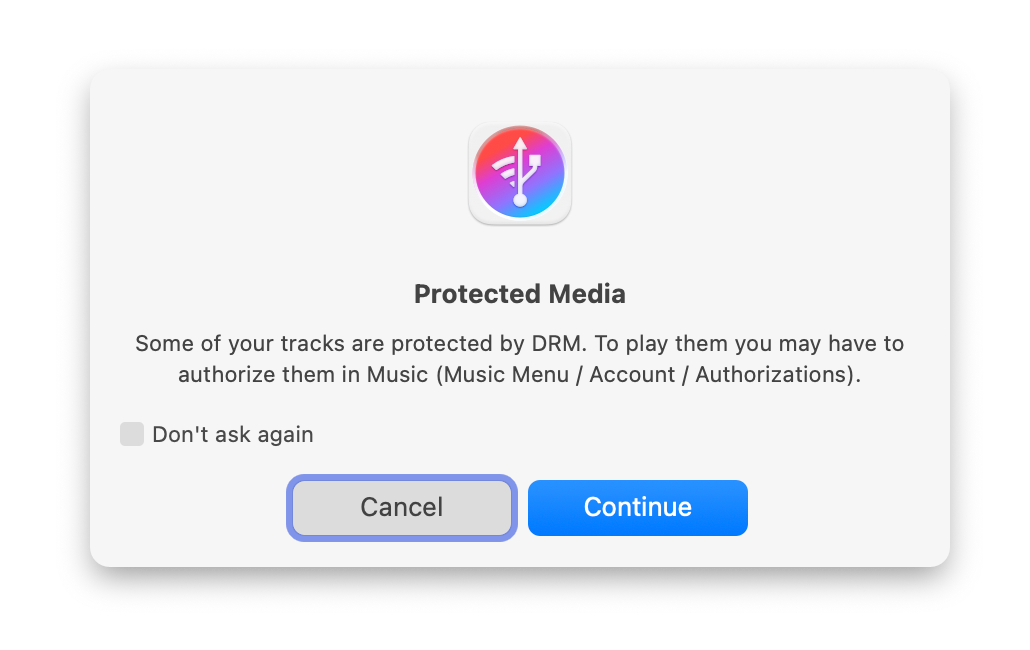Music & Videos
Transfer music from an iPhone, iPad, or iPod to iTunes or Music

If you’re looking for a better way to manage music on your iPhone, iPad, or iPod touch, iMazing is a great alternative to Apple Music or iTunes.
Unlike Apple’s apps, iMazing lets you transfer music in both directions — from your computer to your device, and back again. It’s the ideal solution if you need to recover music that only lives on an old iPod or iPhone, or rebuild your music collection from scratch.
iMazing can preserve your playlists and your library’s metadata, including play counts, artwork, and ratings. And it’s smart enough to avoid importing duplicates.
In this guide, we’ll walk you through how to transfer music from your Apple device back to your Mac’s Music app or to iTunes on a Windows PC.
Here is how to transfer music from your Apple devices to itunes or Music
- Launch iMazing on your computer
- From iMazing's Discover view, select Music
- Connect your device to your Mac or PC via USB
- Select your device
- View your music library
- Select the music you want to export
- Click Export to iTunes or Music
- Customize your export
- Transfer your music!
Before you begin
Always make sure you are running the latest iMazing version, to do so select Check for Updates from the iMazing menu, or just download the latest available version for your computer below.
Download and install iMazing on your Mac or PC computer.
Step-by-step instructions
1. Launch iMazing on your computer
Download and install iMazing. For more details please refer to our guide available for PC and for Mac.
2. From iMazing's Discover view, select Music
The first item, in the top left corner of iMazing is the Discover view. Make sure it is selected. In the main window, look for the Media and Communications section and click Music.
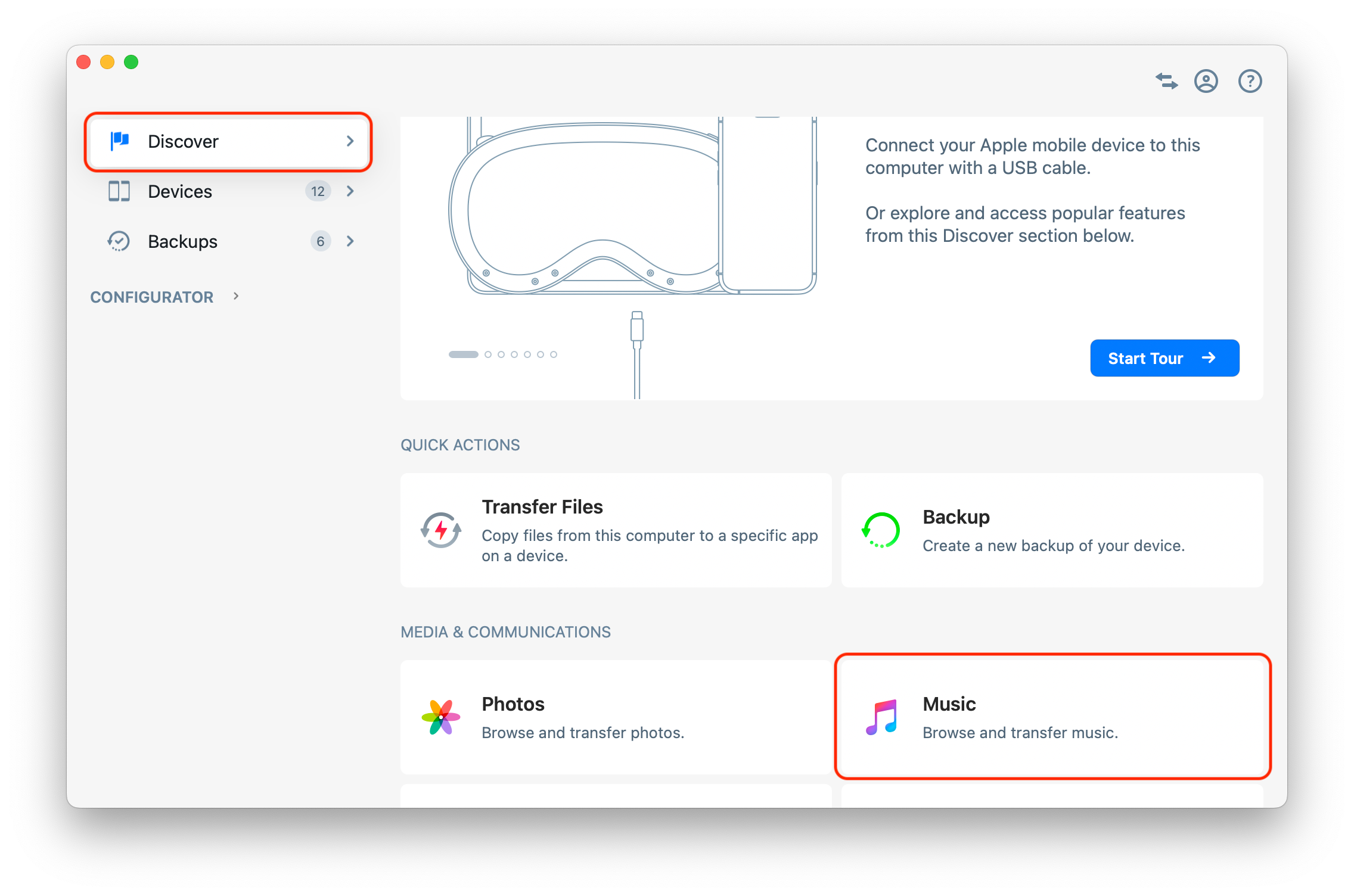
💡 Tip
Once your device is connected and paired, you can access any dataset or tool directly in iMazing:
3. Connect your device to your Mac or PC via USB
iMazing will prompt you to connect the device to your computer on the first time you're using it. To do so use a USB cable, and unlock the device using your passcode, Face ID or Touch ID, and follow the instructions for pairing.

💡 Tip: For more details on connections and pairing refer to this guide.
4. Select your device
iMazing will now display all available devices from which music can be exported to your computer. Click the one you wish to select to begin.

5. View your music library
Once your device is selected, iMazing will load its music library. Depending on the size of your library, this may take a few seconds. You will see a progress bar at the bottom of the iMazing window, and once done the screen will display it's contents, including playlists and filters for albums, genres and artists:
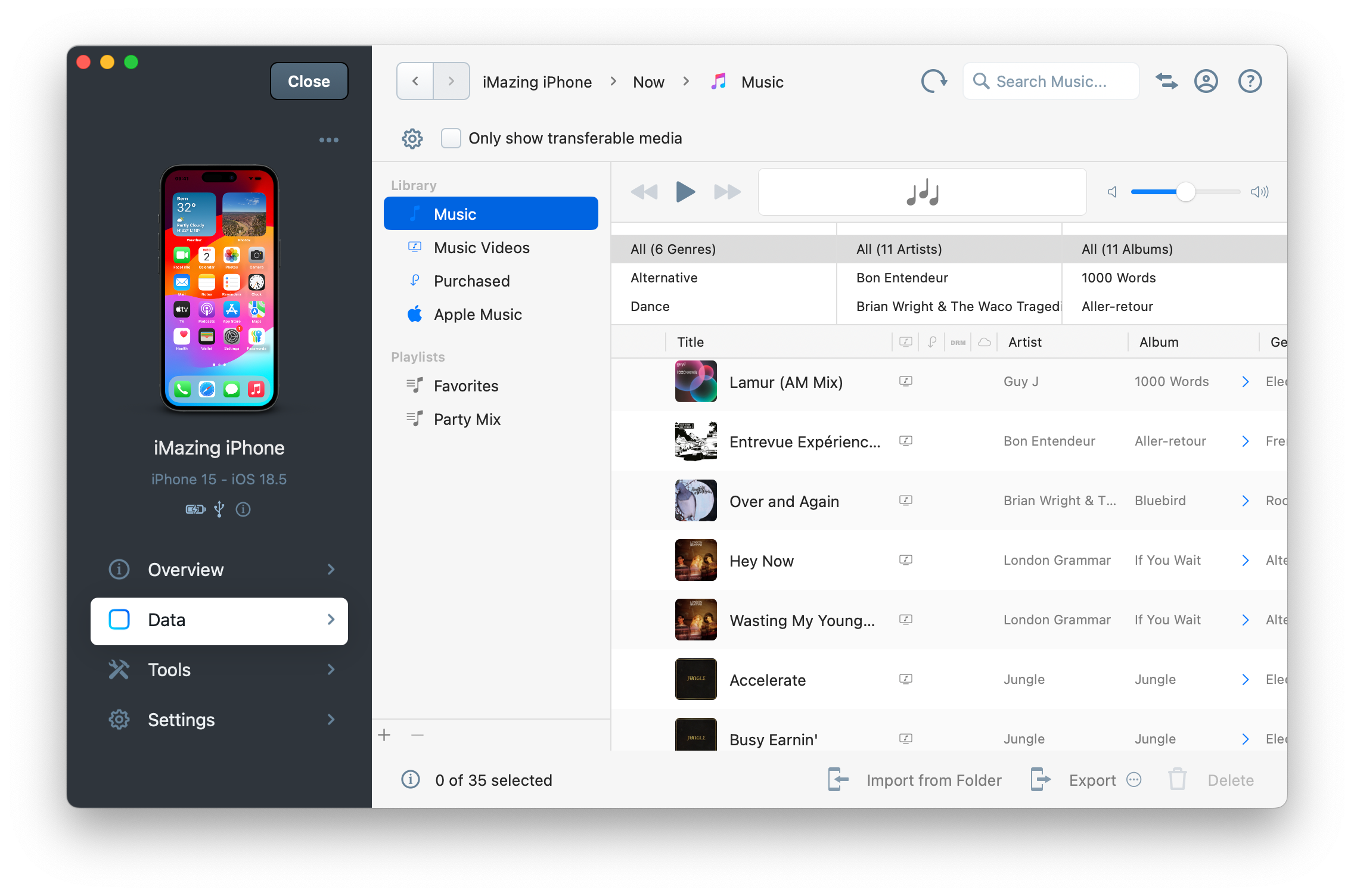
6. Select the music you want to export
- To copy a specific album or song use the Genre/Artist/Album filters and search bar to narrow down displayed tracks, and select the ones you wish to export.
⚡ Quickest workflow: if you only have a few tracks to export, you can simply drag and drop them out of iMazing and onto your desktop, no further steps required!
To copy a playlist select it in the left sidebar and do not select any specific tracks.
To copy your entire library don't select anything and jump straight to step 4.
💡 Tip: when no tracks are selected, iMazing considers that your selection is equivalent to all the tracks matching your current filters. This makes it easier to export a playlist (just select the playlist itself), or a specific album (just select the album). You also get the opportunity to review your selection in the export options window before launching the operation.
7. Click Export to iTunes or Music
Once your happy with your selection, click the Export button in the bottom right corner and select Export to iTunes or Export to Music. iMazing will display the following export options window:
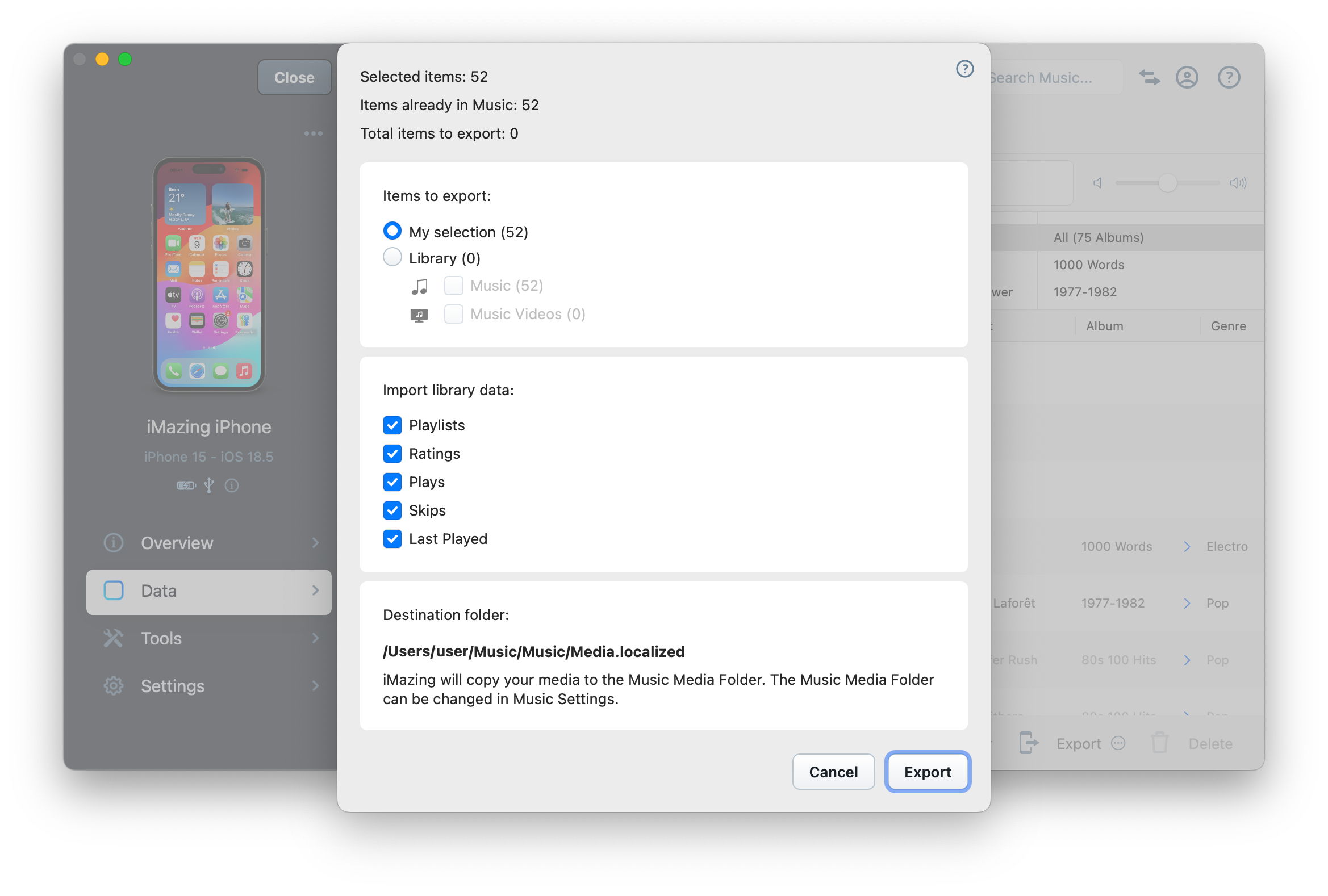
7. Customize your export
The export options window lets you review and refine your selection, and customize what metadata will be included.
Review
In the top part of the window, you'll see how many items are selected, how many are already present in your computer's music library, and how many will effectively be exported.
In the next block, you can still change your mind about your selection and instead opt to export the entire library. If you click on Library, you can further refine which types of items to export.
Customize metadata
In the 3rd block of the export window, you define which types of metadata iMazing will export to your music library. By default, all of the following are checked:
- Playlists: Only available if you've selected a playlist, or nothing at all (entire library).
- Ratings: The star ratings that you've applied to your tracks.
- Plays: The total number of times you've listened to each track.
- Skips: The number of times you've skipped each track, by tapping or clicking the Next button on your iOS device
- Last Played: The date and time of the last time you listened to each track
8. Transfer your music!
Click Export in the bottom right corner and select Export to iTunes or Export to Music. iMazing will begin transferring the files from your iPhone, iPad or iPod touch to your computer's music library. The length of time this will take depends on how many tracks are selected.
⚡ iTunes or Music may open during the transfer. This is perfectly normal: iMazing needs to communicate with the app in order to create and add to playlists, and add track metadata to the music library.
When iMazing finishes, the operation will be listed as successful in the Operations Panel. Click on the magnifying glass icon to reveal past operations.
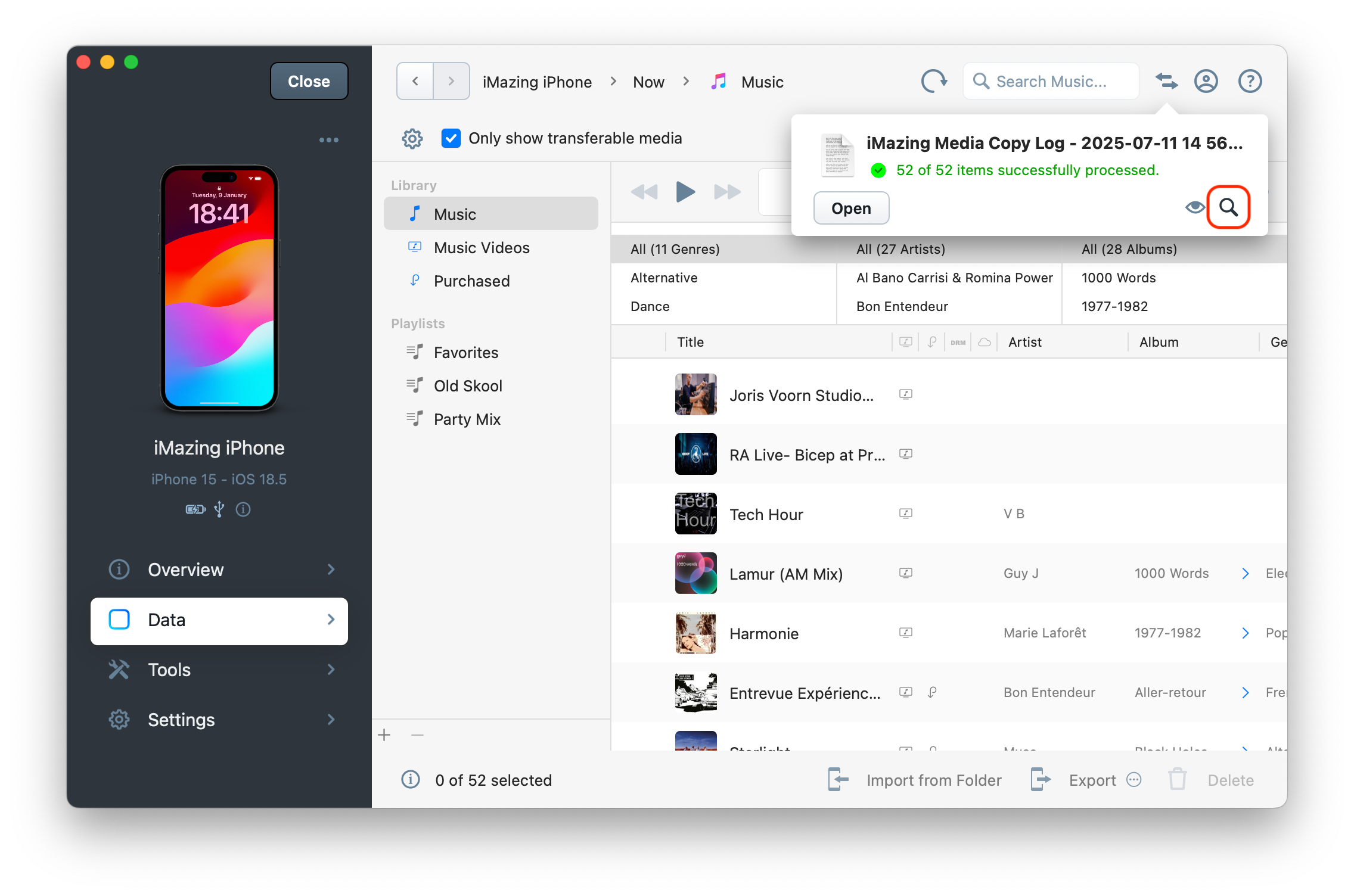
The log is in CSV format that can be opened in Excel or any other Spreadsheet editor. Here's an example:
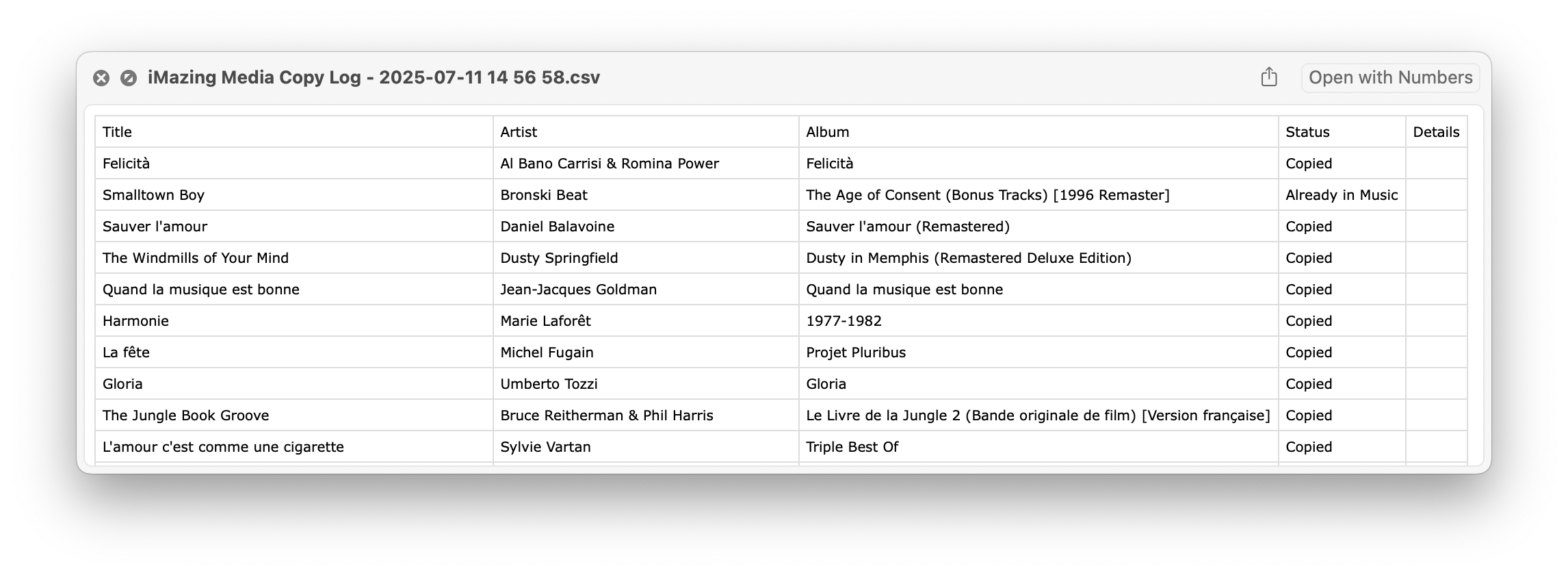
You're done! Your favorite music will be back on your computer now.
Required Permissions on macOS 10.14 and newer
The first time using iMazing's Export to Music feature on macOS 10.14 and newer, you will be prompted twice by macOS to authorize iMazing to 'control' Music.app and System Events.app:
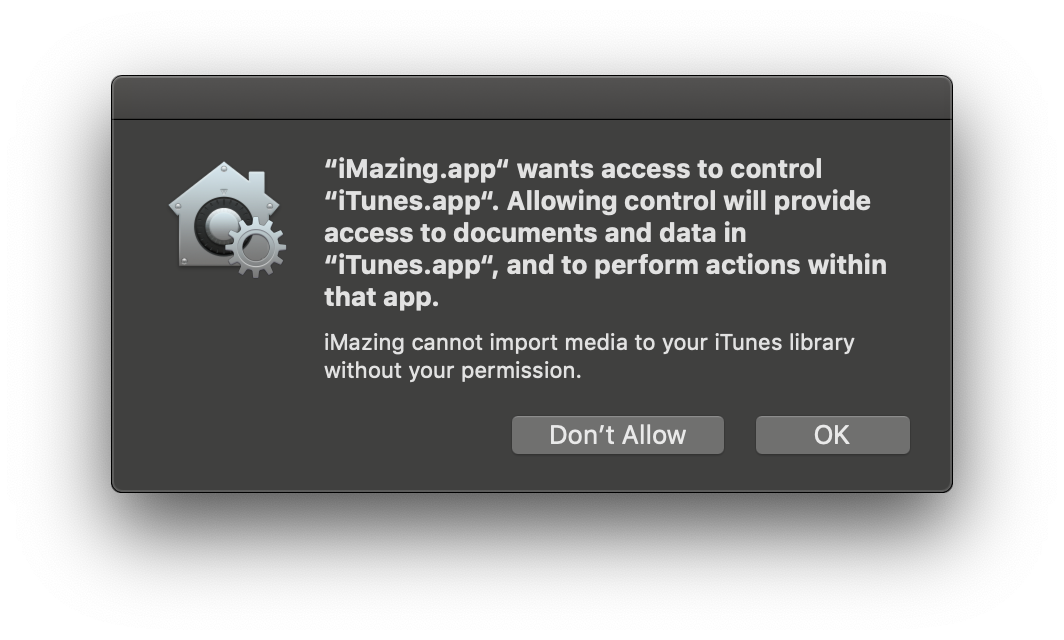
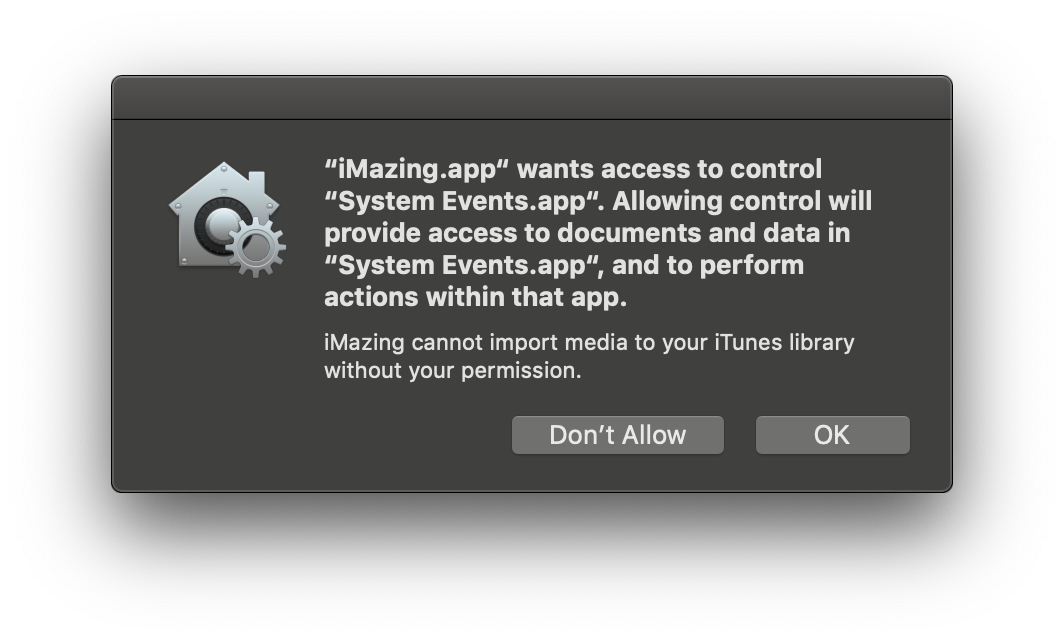
💡 iMazing ONLY uses these permissions to import media to your iTunes Library. Granting access is perfectly safe!
After granting iMazing access through both prompts, you can proceed with the export as usual and will not be prompted again.
If you've ever denied iMazing access, iMazing will display a dedicated screen when you try to export media:
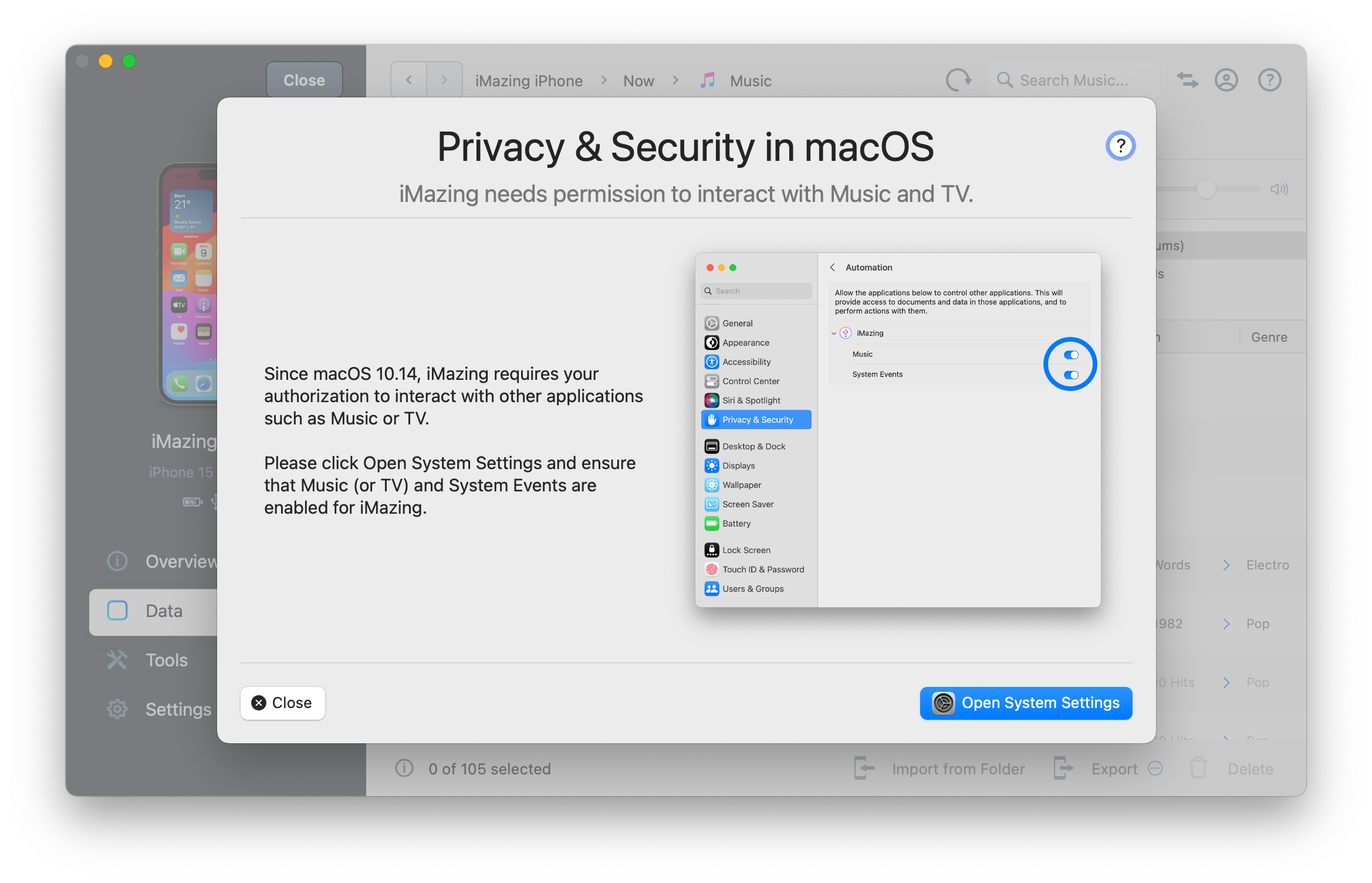
Simply follow the instructions on screen to whitelist iMazing:
- Click the Open System Settings button
- In the Preferences window which will have opened, click the lock and enter your macOS user password to allow changes
- Check the 2 checkboxes just like in the screenshot below:
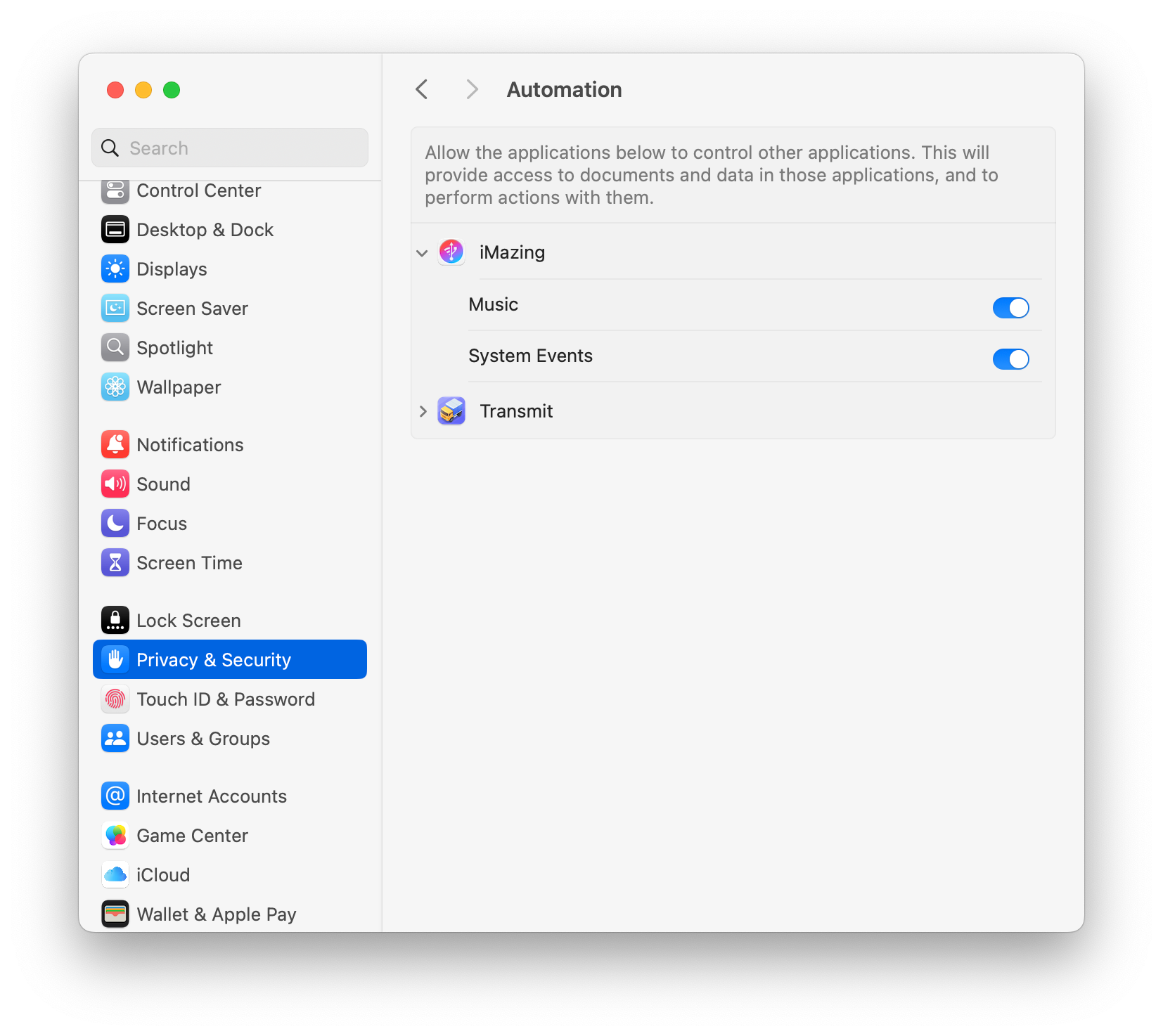
Going further
If you select the option Only Show Transferable Media above the toolbar, iMazing will only list files it can copy. If you uncheck this option, any files that iMazing cannot transfer will be displayed in grey.
There are two reasons why iMazing may not be able to copy files:
iCloud Music tracks that aren't downloaded cannot be copied, because they are not on your device. If you do want to export music that's in your iCloud Music Library, you should download it first to your device, or use iCloud Music on your computer as well.
Apple Music tracks cannot be copied because they are always DRM-protected, meaning they are encrypted and will not play at all once exported. This is why iMazing lists them as non-transferrable. Those types of tracks are identifiable by an Apple logo.
Tracks purchased from the iTunes Store before 2009 may also be protected and unreadable (Apple removed DRM after this time). If a track you've selected for export is DRM protected, iMazing will display the following warning:
